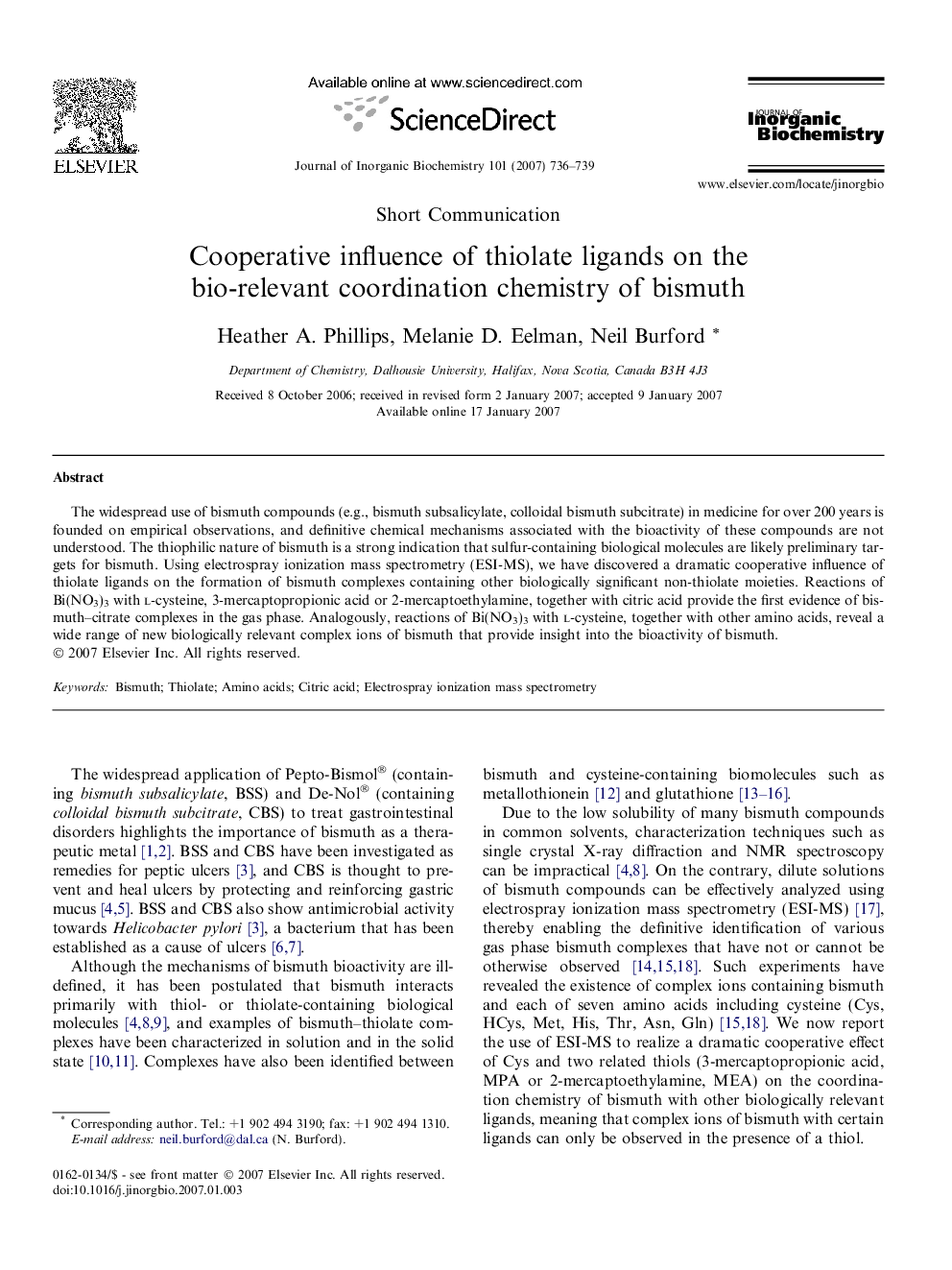| Article ID | Journal | Published Year | Pages | File Type |
|---|---|---|---|---|
| 1318148 | Journal of Inorganic Biochemistry | 2007 | 4 Pages |
The widespread use of bismuth compounds (e.g., bismuth subsalicylate, colloidal bismuth subcitrate) in medicine for over 200 years is founded on empirical observations, and definitive chemical mechanisms associated with the bioactivity of these compounds are not understood. The thiophilic nature of bismuth is a strong indication that sulfur-containing biological molecules are likely preliminary targets for bismuth. Using electrospray ionization mass spectrometry (ESI-MS), we have discovered a dramatic cooperative influence of thiolate ligands on the formation of bismuth complexes containing other biologically significant non-thiolate moieties. Reactions of Bi(NO3)3 with l-cysteine, 3-mercaptopropionic acid or 2-mercaptoethylamine, together with citric acid provide the first evidence of bismuth–citrate complexes in the gas phase. Analogously, reactions of Bi(NO3)3 with l-cysteine, together with other amino acids, reveal a wide range of new biologically relevant complex ions of bismuth that provide insight into the bioactivity of bismuth.
